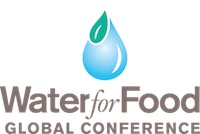 Finding of the Global Yield Gap and Water Productivity Atlas were unveiled this week at the sixth annual Water for Food Global Conference. The outcome of a six-year international collaborative research effort led by the Daugherty Water for Food Institute at the University of Nebraska and Wageningen University in the Netherlands, the Atlas is the first transparent, interactive and map-based web platform to estimate exploitable gaps in yield and water productivity for major food crops worldwide.
Finding of the Global Yield Gap and Water Productivity Atlas were unveiled this week at the sixth annual Water for Food Global Conference. The outcome of a six-year international collaborative research effort led by the Daugherty Water for Food Institute at the University of Nebraska and Wageningen University in the Netherlands, the Atlas is the first transparent, interactive and map-based web platform to estimate exploitable gaps in yield and water productivity for major food crops worldwide.
According to the Atlas, sub-Saharan Africa has the world’s largest gap in farm yields at 70-90 percent below their potential. The data show that Sub-Saharan Africa – primarily smallholder farmers practicing subsistence agriculture in Burkina Faso, Ethiopia, Kenya, Mali, Niger, Nigeria, Tanzania and Uganda – can potentially increase yields of existing farms by more than twofold. Other studies show that Ethiopia’s surface water and groundwater supplies could irrigate 10 times as much land than they are right now.
 The Atlas can help farmers, policy makers, foundations and private sector organizations identify regions with the greatest potential to sustainably produce more food with strategic use of resources. The Atlas also provides a digital platform for analyzing location-specific crop production and land-use changes, as well as the potential impact of certain crops or new agriculture technologies on specific areas.
The Atlas can help farmers, policy makers, foundations and private sector organizations identify regions with the greatest potential to sustainably produce more food with strategic use of resources. The Atlas also provides a digital platform for analyzing location-specific crop production and land-use changes, as well as the potential impact of certain crops or new agriculture technologies on specific areas.
“Producing enough food to meet the demands of more than 9 billion people in 2050, while conserving natural resources and ecosystems, depends on improving crop yields on existing farm land around the world,” said Roberto Lenton, founding executive director of the Robert B. Daugherty Water for Food Institute at the University of Nebraska. “The foremost use for the Atlas is to leverage data to identify opportunities to strategically increase yield and water productivity of existing cropland, rather than tilling more land that may not be ideal for sustainable crop production.”
Find out more at YieldGap.org.
